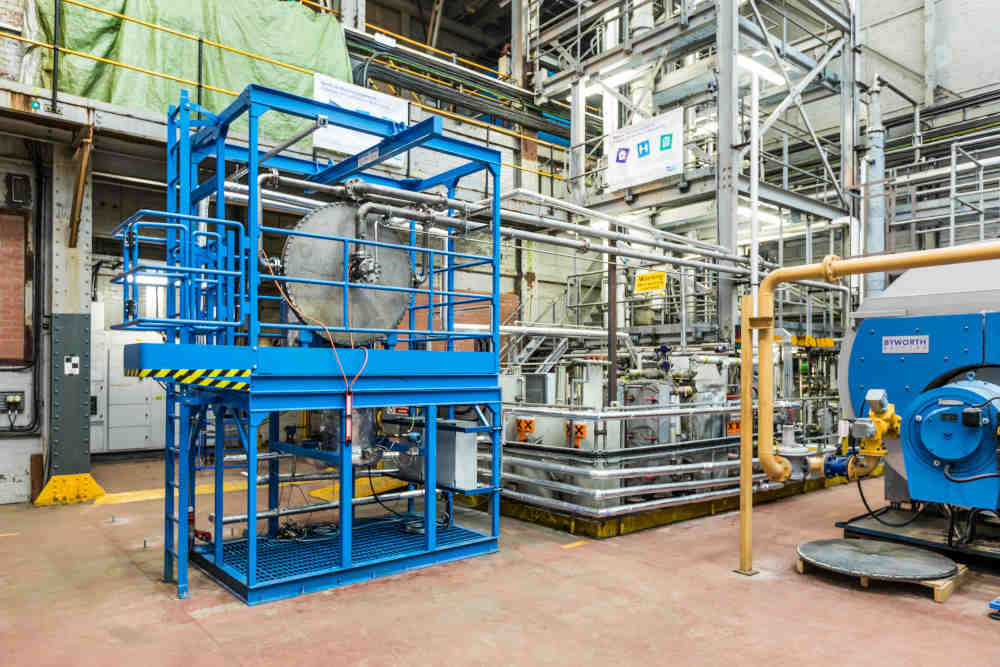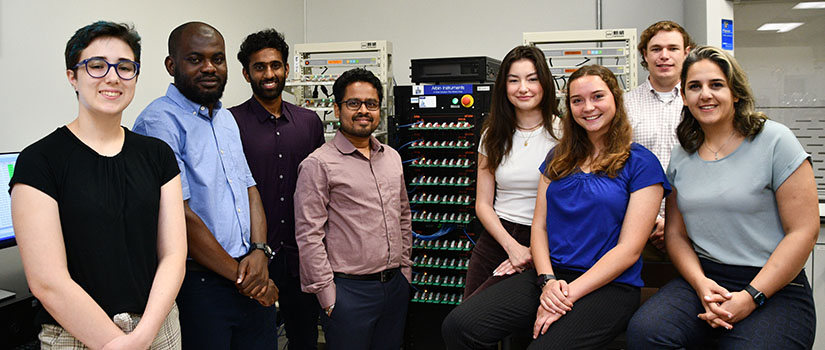Carbon capture technology is a way for companies to safely remove carbon dioxide (CO2) from flue gases and the technology is getting smaller – making it more economically-viable for more companies.

Reducing greenhouse gas (GHG) emissions is a major focal point and concern for investors. As a result, companies are feeling pressure to reduce their GHG footprint while also remaining profitable. Often, this pressure is passed onto individual industrial facilities to reduce their GHG emissions without impacting the bottom line.
There are three decarbonization pathways that can reduce GHG emissions:
-
Fuel switching
-
Energy efficiency
-
Carbon capture
Fuel switching includes the reduction of fossil fuel use in favor of either low-carbon fuels (i.e., green hydrogen or renewable natural gas) or electricity. However, the infrastructure for delivering low-carbon fuels is not well developed in every jurisdiction. As such, the cost of such fuels can be prohibitive. Furthermore, the use of coal and natural gas to generate most grid electricity in some jurisdictions means that electrifying may not result in overall emissions reduction, but “push the emissions to the grid.
In addition to switching to expensive low-carbon fuels, or electrifying an industrial process, fossil fuel use can be reduced via process improvements. This can include:
-
Installing more efficient equipment
-
Increasing heat recovery
-
Taking advantage of cogeneration and trigeneration processes to deliver heat, cooling and power to industrial processes.
For some industrial processes, reducing energy use may be impractical or not possible, with existing commercially available technology.
Point source carbon capture is the process of removing CO2 from flue gases, either pre-combustion (or before it is used in a process) or post-combustion (or after use in a process). Post-combustion carbon capture is technically feasible for almost all industrial facilities, given that natural gas is used in internal combustion engines, gas turbine generators or boilers. The core technical principle behind the most prevalent form of point source carbon capture (chemical absorption) has been proven in the field, for decades, for natural gas sweetening.
Most commercially available point source carbon capture systems are large scale (> 200,000 US tons CO2 per year) and are marketed to large fossil fuel emitters or producers. These systems often require large absorption and regenerator towers to capture the CO2 from flue gas streams and remove it from the solvent. For many industrials with lower GHG emissions, carbon capture can be a risky solution, due to the need for large pieces of equipment and significant initial capital expenditures (CAPEX) investment.
A lack of available physical space and the high costs have both been barriers to widespread deployment of carbon capture systems. However, one original equipment manufacturer (OEM) is focused on overcoming these barriers. Carbon Clean is a carbon capture solutions company headquartered in the UK that provides cost-effective carbon capture technologies for hard-to-abate industries such as cement, steel, energy from waste and refineries.

Its latest innovation is a fully modular carbon capture solution, CycloneCC, which has been specifically designed to reduce the physical footprint required by up to five times and the overall size of the technology by ten times – making it an ideal solution for many industries where space is at a premium. CycloneCC is smaller than traditional carbon capture equipment due to the use of rotating packed beds and the company’s proprietary amine-promoted buffer salt solvent.
The technology has been successfully pilot tested at 1 ton per day (TPD) and will be available in standardized modules of 10, 100 and 300 TPD.
It is prefabricated and skid-mounted making installation quicker (it can be installed in less than eight weeks) and easier. As a fully modular technology, units can be added in line with a company’s decarbonization ambitions and investment capacity, allowing CAPEX to be spread out over a longer period, rather than all at once.
Projects include working with CEMEX, a global leader in the building materials industry, on deploying CycloneCC at its cement plant in Victorville, California and Rüdersdorf plant in Germany. Carbon Clean is also seeking to develop a pilot using CycloneCC with Chevron on a gas turbine in San Joaquin Valley, Calif.

Carbon utilization methods
Once CO2 has been captured it must be utilized or stored. Given that not every industrial facility has access to a CO2 trunkline, or the suitable geology, for long-term storage, carbon utilization will be a critical activity in the post-carbon economy. For example, a project in Spain is planning to use captured CO2 in local greenhouses to boost production and a project in India is converting the captured CO2 into soda ash which is then used in detergent products.
While each activity may not qualify for CO2 reduction credits (or tax credits for that matter) they can participate in their own carbon markets, some of which are already well established. Mineralization, for example, is one utilization pathway which can both generate CO2 reduction credits and be sold as an additive in the aggregate industry.
Another utilization option is the production of carbon neutral fuel. There are a few primary pathways to produce carbon-neutral fuels using CO2 as a feedstock, including: Thermochemical conversion, electrochemical conversion and biochemical conversion.
Thermochemical conversion is a well-known pathway for fuel production, and typically requires another energy carrier (e.g., hydrogen) to upgrade CO2 into a combustible fuel, such as methane. Electrochemical Conversion is similar to thermochemical conversion but allows for the production of other chemical feedstocks/fuels, such as ethanol. Electrochemical conversion uses electricity (potentially renewable), captured CO2, and a fuel cell to produce value-added chemicals.
Biological conversion of CO2 to value-added products, such as e-fuels, is similar to other biofuel production processes such as anaerobic digestion. In one such process, a microorganism, with a specific enzyme, converts CO2 into several different chemicals, including but not limited to: ethanol, methanol, ethylene, and even sustainable aviation fuel (with the addition of other reactants).
Cemvita Factory is an OEM that specializes in the biological conversion of CO2 into value-added products. Cemvita, which is based in Houston, focuses on offering “microbes-as-a-service” to potential clients who are interested in upgrading their CO2 into useful products. One notable Cemvita Factory project is their partnership with Oxy to convert 1.7 million tons per year of captured CO2 (from a cogeneration power plant) into 1 billion pounds per year of bioethylene.
A demonstration pilot project is being built to test this concept at a larger scale. This technology represents a promising pathway for carbon utilization.
Every industry has unique needs, but carbon capture technologies are fast developing to increasingly meet these needs and become more affordable, which remains a significant challenge. Innovation and information are the keys to the future for this technology.
Jaden Murphy, a post-carbon project engineering coordinator for CEM Engineering, said of carbon capture’s future: “The future of carbon capture is highly dependent on the future developments in the utilization of CO2. If utilization of CO2 in manufacturing, food and beverage production, and the mineral or metal industries is recognized, then Carbon Capture will be able to be deployed more readily and may become ubiquitous in the next 10 to 12 years.”

– This article appeared in the Gas Technology supplement.
CarbonClean
Cemvita Factory



